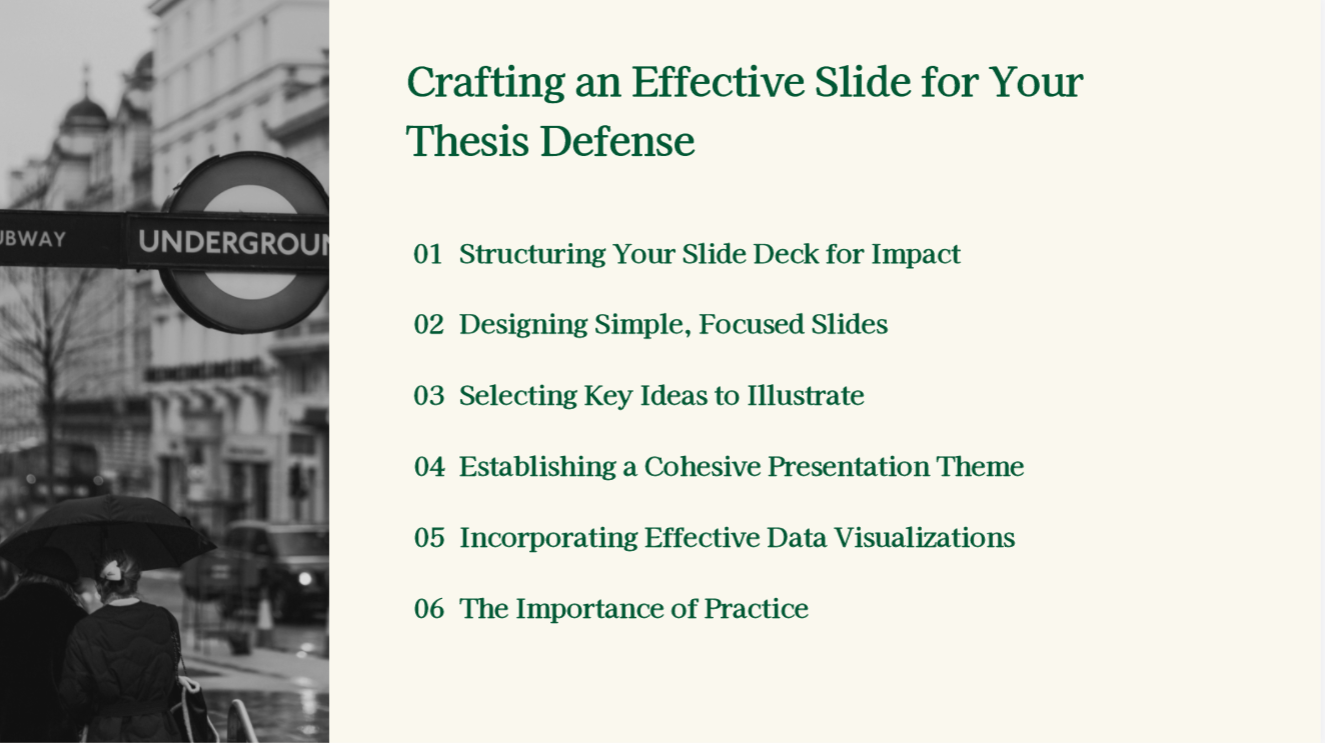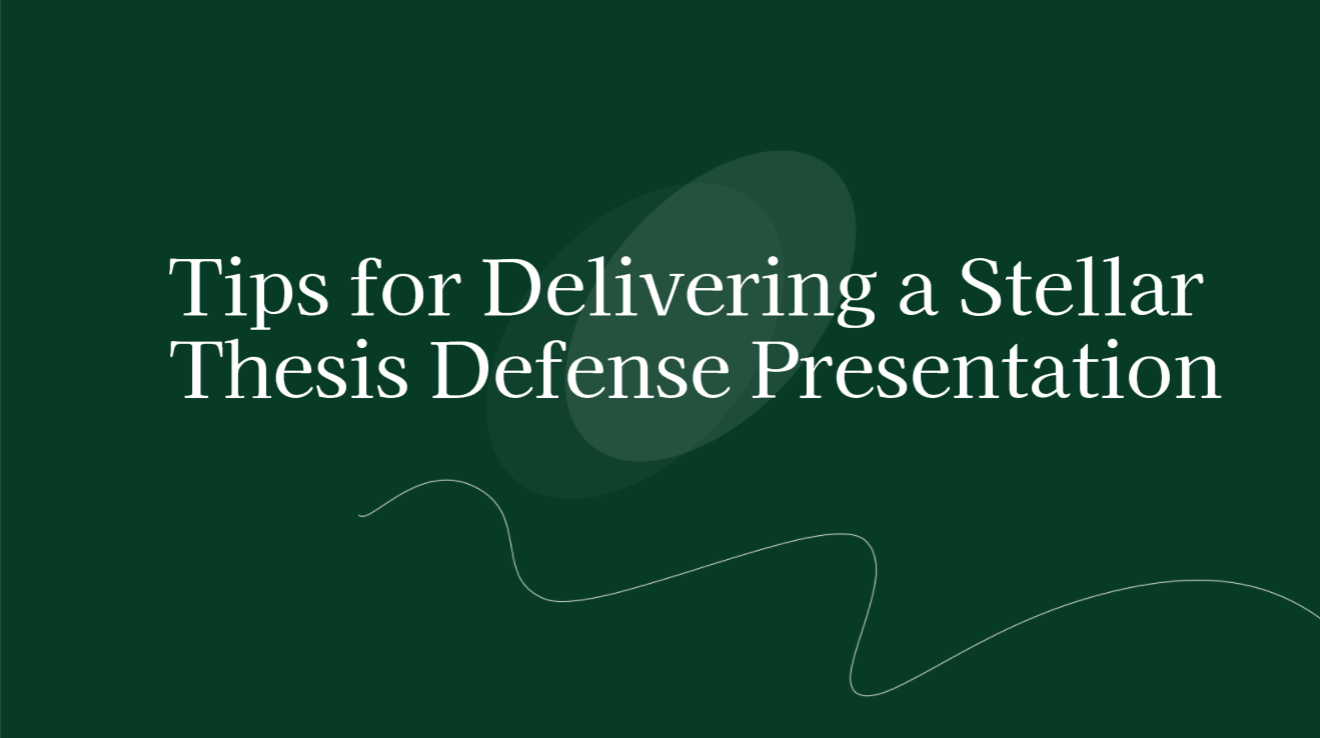The thesis defense marks a significant milestone in your academic journey, showcasing the culmination of your research efforts. A compelling presentation captures the essence of your study and engages your audience. In this blog, we will explore the importance of the research aim slide, how to craft it effectively, and tips for delivering a stellar thesis defense presentation.
Understanding the Research Aim Slide
The research aim slide encapsulates the core objectives of your research, guiding listeners through your thought process and helping them appreciate the significance of your work. A well-crafted slide not only clarifies your intentions but also engages your audience by clearly outlining the purpose of your investigation. Below, we delve into the essential elements that make up an effective research aim slide.

- Definition and Importance
The research aim slide is a critical component of your presentation that outlines the primary objectives of your study. It succinctly states what your research seeks to address, providing a roadmap for your audience. A clear and compelling research aim not only clarifies your intentions but also helps your audience understand the significance of your work.
- Key Components of a Strong Research Aim Slide
A strong research aim slide should include the following elements:
- Clear Articulation of the Research Question: Your research aim should be specific and focused, clearly stating the problem you are investigating.
- Concise Statement of Objectives: Outline the key objectives that guide your research. This gives your audience insight into your approach and methodology.
- Relevance to the Broader Field: Highlight how your research contributes to existing knowledge or addresses a gap in the literature. This helps place your work within the broader academic conversation.
Crafting an Effective Slide for Your Thesis Defense

Creating an effective slide for your thesis defense is essential for communicating your research clearly and engagingly. A well-crafted slide not only highlights your research aim but also sets the tone for the rest of your presentation. Here are several strategies to consider:
- Structuring Your Slide Deck for Impact
Begin with a well-organized outline to ensure your thesis defense presentation is strategically placed, setting the stage for your key findings.
- Designing Simple, Focused Slides
Keep your slides uncluttered. Use bullet points and clear headings to ensure readability, allowing your audience to concentrate on your message. This minimalist approach reduces cognitive overload and emphasizes the most important information you want to convey.
- Selecting Key Ideas to Illustrate
Focus on the most critical aspects of your research aim. Choose a few essential points to highlight rather than overcrowding your slide with excessive information.
- Establishing a Cohesive Presentation Theme
Define a consistent theme for your presentation, including visuals and color schemes that align with your research topic to enhance coherence and engagement. A cohesive theme reinforces your professionalism and makes your presentation visually appealing.
- Incorporating Effective Data Visualizations
Utilize charts, graphs, and infographics to present complex information visually. This method can enhance the accessibility and impact of your research findings.
- The Importance of Practice
Rehearse your presentation multiple times to build confidence. Familiarity with your material will help you deliver a smooth and engaging presentation.
Tips for Delivering a Stellar Thesis Defense Presentation

Preparing for a thesis defense can be a daunting task, but with the right strategies, you can make a lasting impression. Confidence and clarity are crucial, as they help convey the significance of your research effectively. To ensure a successful thesis defense presentation, it's essential to keep the following tips in mind:
- Engage Your Audience: Begin with an engaging introduction that captures the audience's attention. Start with a captivating introduction that grabs attention. Use anecdotes or relevant examples to illustrate your points.
- Maintain Eye Contact: Make an effort to connect with your audience by maintaining eye contact. This fosters engagement and helps convey your passion. Eye contact also encourages a rapport, making your audience feel involved during your presentation.
- Manage Your Time: Typically, a master thesis presentation lasts about 20-30 minutes, followed by a Q&A session. Knowing how long a master thesis presentation is can help you allocate time effectively for each section.
- Prepare for Questions: Anticipate questions that may arise during the defense and prepare thoughtful responses. This can significantly enhance your credibility and show that you are a competent researcher.
Final Thoughts
In summary, the research aim slide is a crucial element of your thesis defense that sets the tone for your presentation. By clearly articulating your research question and objectives, you can effectively guide your audience through your findings.
For those looking to enhance their presentation design, consider using tools like presenti.ai. This AI-powered platform offers a variety of customizable templates that can help you create compelling slides effortlessly. With thorough preparation and the right tools, including knowing how long a master thesis presentation is, you can elevate your thesis defense and leave a lasting impression on your audience.





